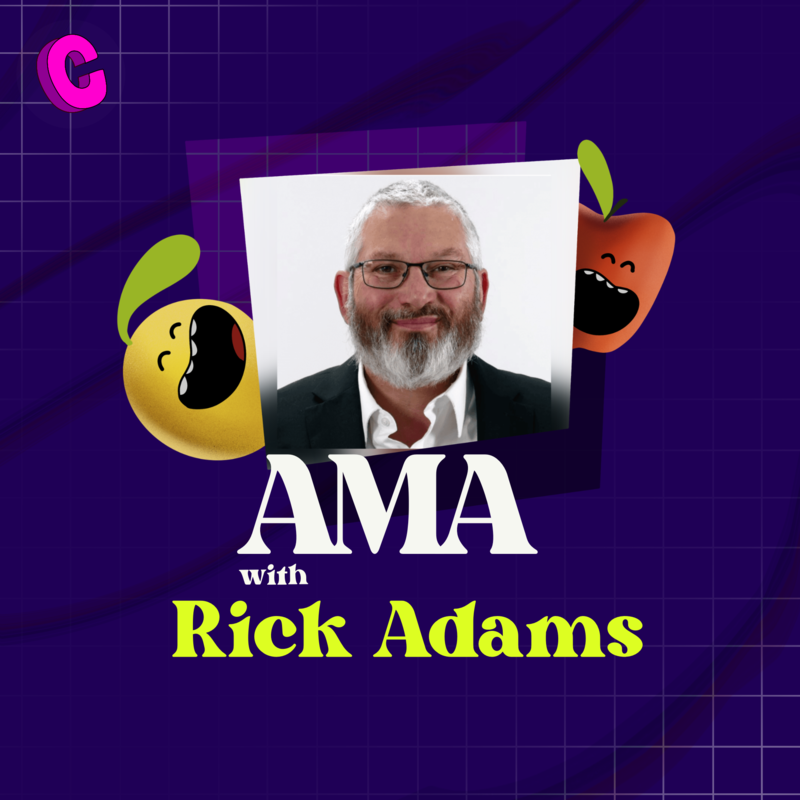We are back with another Ask Me Anything session roundup blog. This week we had a great guest who is a business owner, author, trainer, and consultant helping technology companies to deliver measurable business value to their customers.
Meet Rick Adams, who is the founder of his current company called the Practical CSM Academy. He is also listed among SuccessCoaching's Top 100 Customer Success Strategists in 2020, and SmartKarrot’s Top 50 Customer Success Influencers in 2021.
We asked some mind-boggling questions around CSM, Community, and how communities can help CSM teams greatly, we’d got some amazing answers from Rick.
Without further ado, let’s dive in!
The story of Practical CSM
First things first, before we begin our series of questions about how the community helps the CSM team, we asked Rick to share his journey of building and getting started with Practical CSM? What inspired him to begin this journey and how far along has he come? Let us hear his story.
“My inspiration for Practical CSM comes from my 30 years of previous work in the Technology industry, including pre and post-sales professional training, business transformation consulting and owning and running my own SaaS company for six years.
This experience, combined with my own technology consulting, training, and SaaS ownership experience enabled me to get a publishing deal on my first book: Practical Customer Success Management which in turn led to the formation of my CS training and certification company Practical CSM.”
The community and CS team are like Tom Hardy and Venom!
We can say that the CS and community have a Symbiotic relationship like Tom Hardy and Venom. Of course, the CS team can function without the help of the community, but the benefits and power they acquire through the Community are plentiful.
The role of a community can vary marginally between different situations, but for almost all companies, a community can play a very positive role in embedding and extending customer success.
Perhaps, a customer community can serve as an extension of the CS team by providing a form of self-service customer success.
Instead of having to go to a CSM, Customer A can gain assistance from Customers B and C. This might in turn free up the CSM to deliver a more complex intervention to Customer D. In this way all customers end up with a better quality service at a lower price point.
One more example would be the ability for multi-direction conversations to take place, to help resolve more complex situations that perhaps no one (even the CSM) has the complete answer to, but by collaborating between multiple parties, an answer can ultimately be derived.
Crossroads: Community managers X CSM team
Indeed, it is possible if there are commonalities between the two. In order to know that, you need to follow these steps.
Step 1: Get to know each other. Spend time with the CS team and explore their mission, their targets, objectives, and their roles and responsibilities, whilst also sharing similar information about yourself.
Step 2: Determine where you have common objectives, where attainment of one target might help attainment of another target, or even where responsibilities overlap.
Step 3: Focus on these areas of common interest – create plans for collaboration between departments where each department's activities reinforce the other and the overall outcome is dependent upon both departments' work.
Step 4: Share your data and not just the raw data but also your analyses into the meanings behind the data that provide useful insights.
Step 5: Celebrate successes together and spend time socializing as well if at all possible.
This way Community Managers, CS teams, and Communities can greatly benefit from symbiotic relationships.
Measuring Community chemistry
Happy customers are more likely to remain as customers than unhappy ones. But why try so much, when you can achieve a great customer experience through your company's customer community?
When your customers are satisfied with the Customer Experience, it leads to increased happiness or increased outcome attainment then you should find a commensurate reduction in churn and increase in NPS (both being measurements).
That said, even if a customer community does make a positive difference to churn/NPS there may be other things that would be a better investment - for example, more CSMs, better-trained salespeople, a new marketing campaign, etc.
And the saga continues…
To know more about how to induce engagement in a community, how young professionals can boost their CSM personal growth, challenges faced by CSM & Community Managers, and much more that are related to CSM strategies and Communities. Do feel free to check out our AMA session here. Oh by the way, there is a surprise waiting for you here!
And if you have any questions related to community-building, or you are a community enthusiast waiting to ask your questions, then do join our Community cold coffee community and ask your questions every alternate Wednesday in our AMA session. We would totally love to have you as a part of our community and will be hyped to catch you there!

